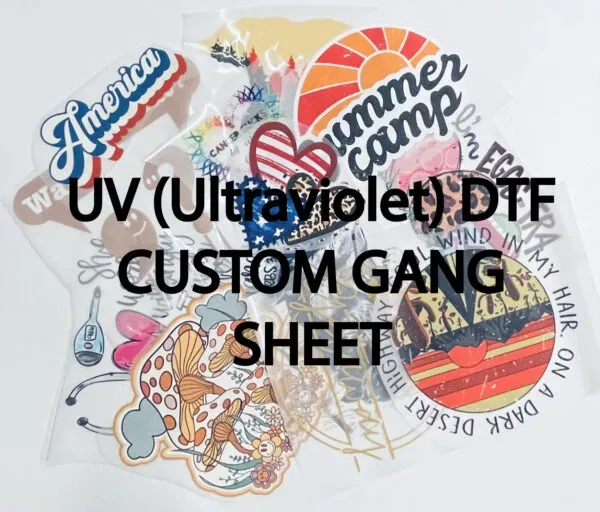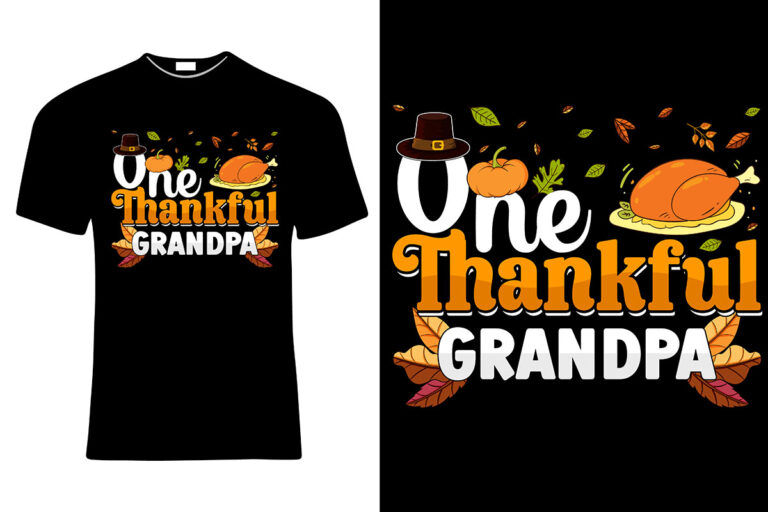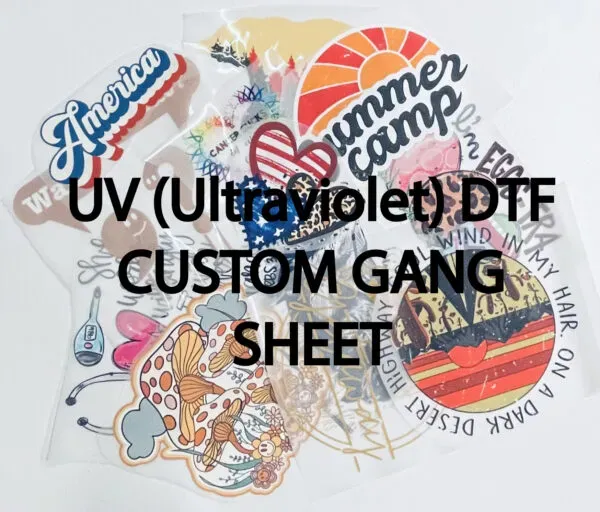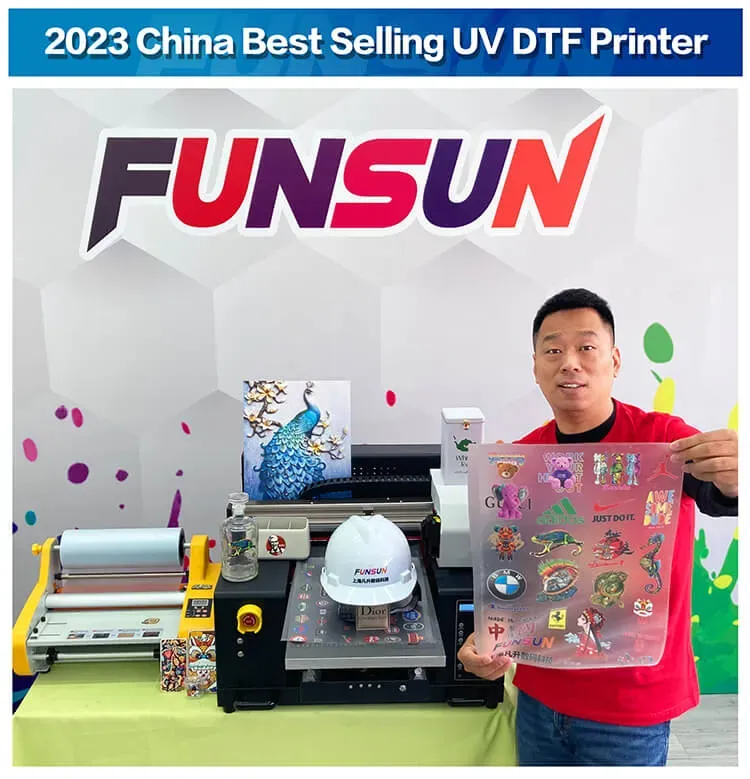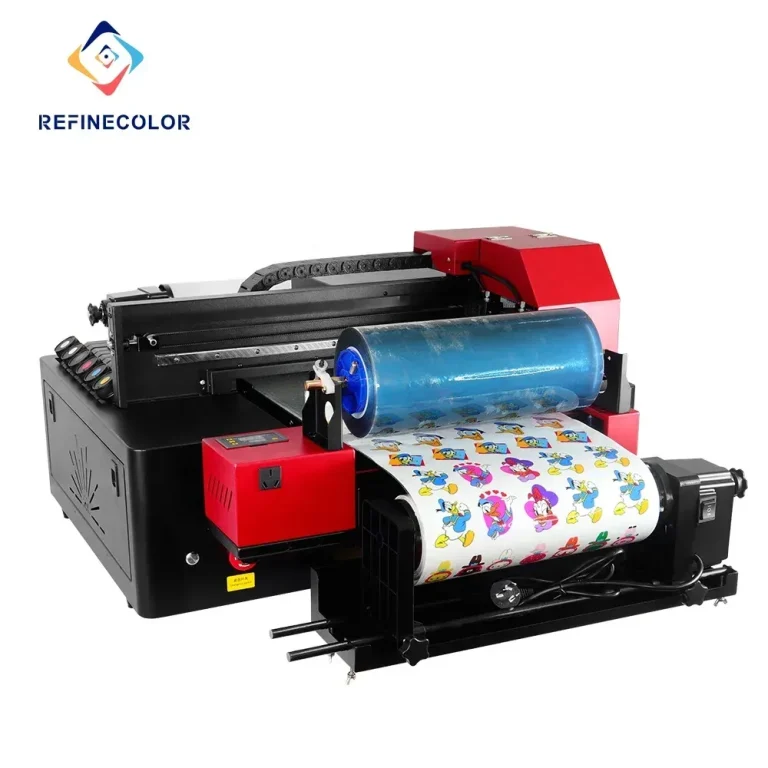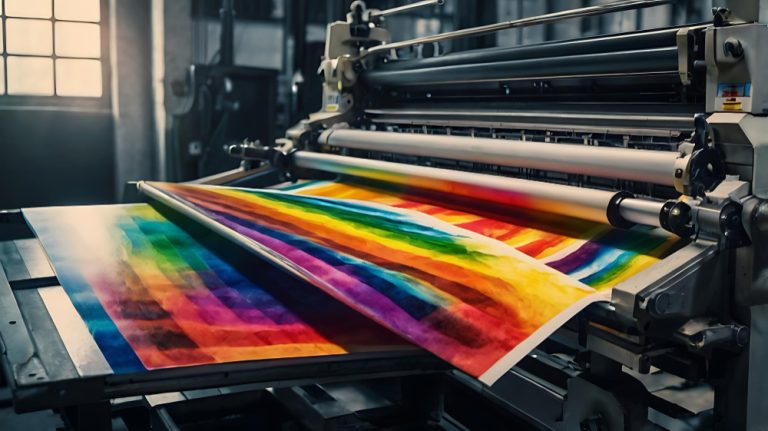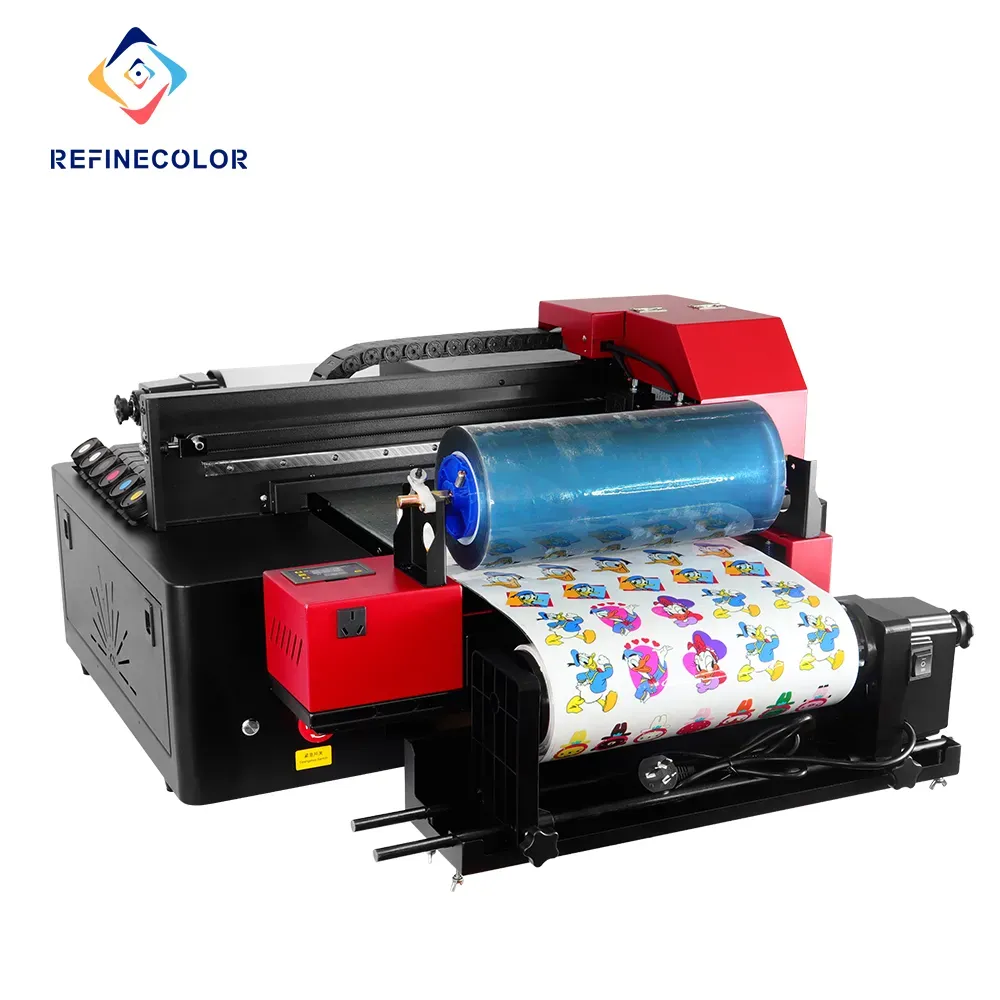
In the realm of digital textile printing, UV DTF (Ultraviolet Direct to Film) technology emerges as a groundbreaking innovation poised to redefine the industry. As the demand for custom textile printing increases, UV DTF stands out for its ability to deliver vibrant, long-lasting images with minimal environmental impact. This advanced UV printing technology employs ultraviolet light to cure the inks, resulting in high-resolution prints that cater to diverse fabric types. Aligned with the movement towards sustainable textile technology, UV DTF minimizes waste and utilizes non-toxic inks, appealing to environmentally-conscious consumers. With its remarkable features and growing applications, UV DTF is undeniably shaping the future of textile printing, making it a key player in the market’s evolution towards agility and sustainability.
UV Direct to Film, a cutting-edge solution in the textile printing sector, is rapidly gaining traction among manufacturers and consumers alike. This method of film-based printing is not only recognized for its efficiency but also for enabling vibrant and customizable designs. As businesses pivot towards innovative textile production methods, UV DTF’s role becomes increasingly vital, particularly with its ability to cater to the rising demand for personalized textiles across various industries. In addition, embracing UV DTF aligns tightly with the contemporary focus on sustainable practices, as it mitigates harmful waste while maximizing print quality. Altogether, this technology represents a significant leap forward in the adoption of eco-friendly practices in textile printing, highlighting its prominence in the market.
Understanding UV DTF Technology
UV Direct to Film (UV DTF) technology is a cutting-edge process that allows for high-quality printing on textiles by utilizing ultraviolet light for curing inks. This technique enables vibrant, detailed images to be printed onto a transfer film, which can then be applied to various fabric types, including cotton, polyester, and blended materials. One of the most significant advantages of UV DTF is its ability to produce prints that are not only visually striking but also highly durable, resisting fading and wear over time.
Unlike traditional printing methods such as screen printing, UV DTF minimizes production time and waste, making it a more sustainable alternative. The technology eliminates the need for pre-treatment of fabrics and generates less runoff of harmful chemicals, aligning with the growing emphasis on eco-friendly practices in the textile industry. This efficiency makes UV DTF particularly appealing to manufacturers looking to meet the rising demand for personalized and sustainable textile printing solutions.
Recent Trends in Digital Textile Printing
The digital textile printing industry is currently experiencing a significant transformation, largely fueled by the introduction of UV printing technology like UV DTF. This shift reflects a broader trend towards customization and on-demand production, driven by consumers’ desire for unique products. As digital solutions become more accessible, brands can offer personalized items without the lengthy setups traditionally associated with screen printing or other conventional methods.
The recent introduction of advanced UV DTF printers demonstrates a commitment to enhancing printing capabilities and speed. Many manufacturers are investing in innovations such as superior UV curing systems, which facilitate better ink adhesion and improved print quality across a variety of substrates. This evolution is poised to meet both market demands and the growing expectations for intricacy in design, allowing brands to produce everything from fashionable apparel to custom home textiles.
Navigating Sustainability with UV DTF
Sustainability has become a cornerstone of the textile industry, with brands increasingly seeking eco-friendly printing methods. UV DTF technology offers a compelling solution, as it produces minimal waste and utilizes non-toxic inks that are free from harmful solvents commonly found in other printing processes. This environmentally friendly approach aligns with consumer expectations for sustainable practices, allowing brands to appeal to the eco-conscious demographic.
Moreover, the adoption of UV DTF reflects a significant shift as brands and manufacturers strive to reduce their carbon footprint. By implementing UV DTF, companies not only improve their operational efficiency but also support the broader sustainable fashion movement. Reports indicate that when brands transition to more sustainable textile technology, such as UV DTF, they can greatly enhance their market position while contributing to the well-being of the planet.
Applications of UV DTF Technology
The versatility of UV DTF technology opens up a myriad of applications across different sectors within the textile industry. From high-fashion garments to customized promotional items, this printing process excels in delivering intricate designs that resonate with consumers. By allowing for detailed graphics and personalized options, UV DTF has transformed how brands approach product development, enabling small-batch production without sacrificing quality.
In sectors like home textiles, UV DTF is making waves by enhancing product offerings. Custom printed cushions, curtains, and table linens can all be realized with this technology, catering to consumers’ desires for unique home décor. As manufacturers continue to explore the possibilities of UV DTF, the technology stands to enrich various market segments, thus driving innovation and creativity within the industry.
Challenges in Adopting UV DTF Technology
While UV DTF technology presents numerous benefits, it also comes with its own set of challenges that manufacturers must navigate. One of the most significant barriers is the high initial investment required for UV DTF printers and associated technology. Smaller businesses may find it financially daunting to transition from traditional methods without guaranteed returns on their investments, potentially stifling innovation within the segment.
Additionally, training and education are crucial components for successfully implementing UV DTF technology. Manufacturers must ensure that their teams understand the intricacies of the process, including maintenance and troubleshooting of the machinery. This learning curve may require time and resources but is vital for companies looking to fully leverage the potentials of UV DTF.
The Future Outlook for UV DTF in Textile Printing
As we look to the future, the potential of UV DTF technology within the textile industry appears remarkably promising. With rapid advancements in printing technology and a growing consumer preference for personalized products, UV DTF stands to play a pivotal role in how textiles are printed and produced. As costs decrease and the technology becomes more familiar among manufacturers, widespread adoption seems inevitable, paving the way for exciting innovations.
Moreover, as sustainability becomes an integral part of consumer purchasing decisions, UV DTF aligns perfectly with the future trajectory of textile printing. Brands that invest in this eco-friendly technology not only enhance their market offerings but also contribute to a more sustainable future in textiles. This alignment will likely drive further growth and inspire ongoing improvements in the effectiveness and efficiency of UV DTF processes, ultimately shaping the landscape of digital textile printing.
Frequently Asked Questions
What is UV DTF in digital textile printing?
UV DTF, or UV Direct to Film, is a cutting-edge technology in digital textile printing that utilizes ultraviolet light to cure inks on a transfer film. This film can be applied to various textiles, offering exceptional image quality, durability, and a sustainable printing solution.
How does UV DTF technology contribute to sustainable textile technology?
UV DTF technology contributes to sustainable textile practices by using non-toxic inks and generating minimal waste during the printing process. This eco-friendly approach aligns with the industry’s shift toward sustainable textile solutions, fulfilling consumer demand for environmentally conscious products.
What are the benefits of using UV DTF for custom textile printing?
The benefits of UV DTF for custom textile printing include high-quality prints with intricate designs, faster processing speeds, and the ability to print directly on a wide range of fabrics. This technology enables manufacturers to meet consumer demands for personalized and small-batch textile products.
In what applications is UV DTF technology commonly used?
UV DTF technology is versatile and commonly used in applications such as fashion, home textiles, promotional items, and custom decor. Its ability to deliver vibrant prints on various fabrics makes it suitable for both high-volume production and personalized orders.
What challenges do businesses face when adopting UV DTF printing?
Businesses may face challenges such as high initial equipment costs and a learning curve associated with new technology when adopting UV DTF printing. These barriers can deter smaller manufacturers from implementing this innovative textile printing method.
What does the future hold for UV DTF in the textile industry?
The future of UV DTF in the textile industry looks promising, with expected technological advancements and decreasing costs. As familiarity with UV DTF increases and consumer demand for sustainable, customizable textiles grows, more manufacturers are likely to adopt this technique.
| Aspect | Details |
|---|---|
| Overview of UV DTF | Uses UV light to cure inks on transfer film for direct textile application. |
| Market Growth | Projected expansion driven by demand for customizable, small-batch products. |
| Technological Advancements | Improvements in printer speed and ink adhesion across materials. |
| Sustainability Focus | Minimizes waste; uses eco-friendly inks to cater to consumer consciousness. |
| Applications | Versatile for fashion, home textiles, and promotional items with intricate designs. |
| Challenges | High initial investment and learning curve for adoption. |
| Future Prospects | Promising adoption as prices drop and technology familiarity increases. |
Summary
UV DTF, or UV Direct to Film printing, is reshaping the landscape of digital textile printing by providing high-quality, sustainable, and efficient printing solutions. As consumer demand for personalized textiles continues to rise, UV DTF technology stands out for its eco-friendly processes and versatility across various applications. With advancements in technology and growing market acceptance, UV DTF is poised to transform how textiles are produced, enabling manufacturers to meet modern consumer expectations for customization while supporting sustainability initiatives in the fashion industry.

